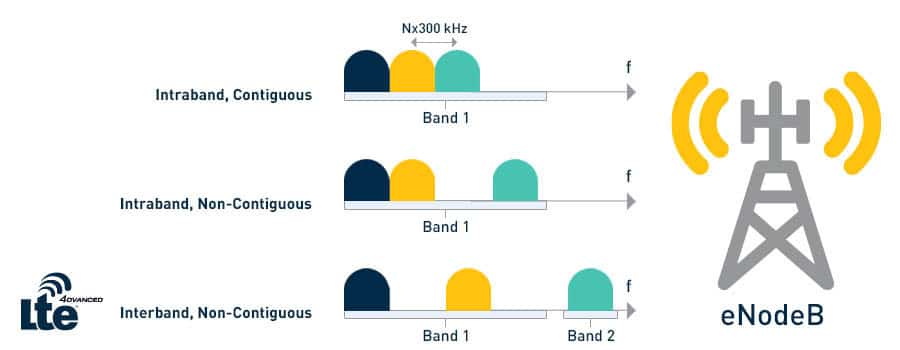Improving Uplink Speeds in Gigabit LTE Modules
By Safi Khan
April 30, 2020
Modern Gigabit LTE networks are judged by their peak downlink speeds, but what about peak uplink speeds? They are becoming essential in enabling new use cases for 4G LTE networks. These use cases include:
When the FCC allocates cellular spectrum through auctions, major mobile network operators (MNOs) bid billions of dollars for this highly coveted commodity. The importance of spectrum is well understood in the cellular industry.
MNOs in North America own pieces of spectrum in which they have deployed their networks; however, in most cases, the frequencies they won during the auctions are not in contiguous chunks and consist of separate frequency bands. It is sometimes difficult or impossible for these MNOs to consolidate their spectrum into contiguous wide bands in which high-speed 4G LTE networks can be deployed.
Carrier aggregation (CA) is a means to combine different parts of the frequency spectrum for a given MNO to allow for a broader bandwidth for transmission of wireless signals. CA is one of the primary technologies needed to achieve the gigabit speeds of 4G LTE networks and the high-speed uplink necessary for the use cases mentioned above.
In Gigabit LTE modules like the LM960A18 from Telit, there is a provision to support CA in the downlink and uplink. Up to five carriers can be supported in the downlink and up to two carriers in the uplink to achieve 1.2 Gbps in downlink and 150 Mbps in uplink. Furthermore, when it comes to uplink CA, it is vital to understand the difference between intraband CA and interband CA. The Telit LM960A18 is the only module available in the market today that supports interband CA in uplink. The major MNOs in North America do not own contiguous spectrum in the same band to support intraband CA. Therefore, they rely on interband CA in the uplink to truly achieve the 150 Mbps speeds in realistic deployments of their networks across the country.
Let us look at the differences between intraband and interband CA. As shown in Figure 1, intraband CA refers to combining component carriers inside the same frequency band. The likelihood of having such an extensive amount of spectrum in the same frequency band by the same MNO is low.

The more likely scenario is that MNOs need interband CA. So, while in some cases, intraband CA can get the full 150 Mbps uplink speeds, it is unlikely to be realistic. On the other hand, let us look at interband CA.
In interband CA, component carriers from different frequency bands can be combined to achieve the 150 Mbps speed. To achieve interband CA support in the module, Telit has added the necessary extra RF components required to simultaneously tune to two different frequency bands in parallel and being able to combine the two streams from two different frequencies in the uplink. Interband CA support also requires two power amplifiers (PA) so that both PAs transmit their respective carrier frequency signals.
Other modules can only achieve intraband CA because they lack the necessary extra components required for inter-band CA support. They only have a single frequency that can be tuned to at any given time for uplink transmission and, respectively, a single PA instead of two PAs. This limitation in other modules, makes them suboptimal candidates for products that need high-speed uplink to address the use cases outlined above — certainly in the current US MNO landscape.
Telit’s LM960A18 is the only Gigabit LTE-class module that supports interband CA in the uplink. It is a global module in a single SKU ideal for enterprise applications and the only module certified on the three major MNOs in North America and beyond.
Speak with a Telit IoT expert to request a project review or developer kit.